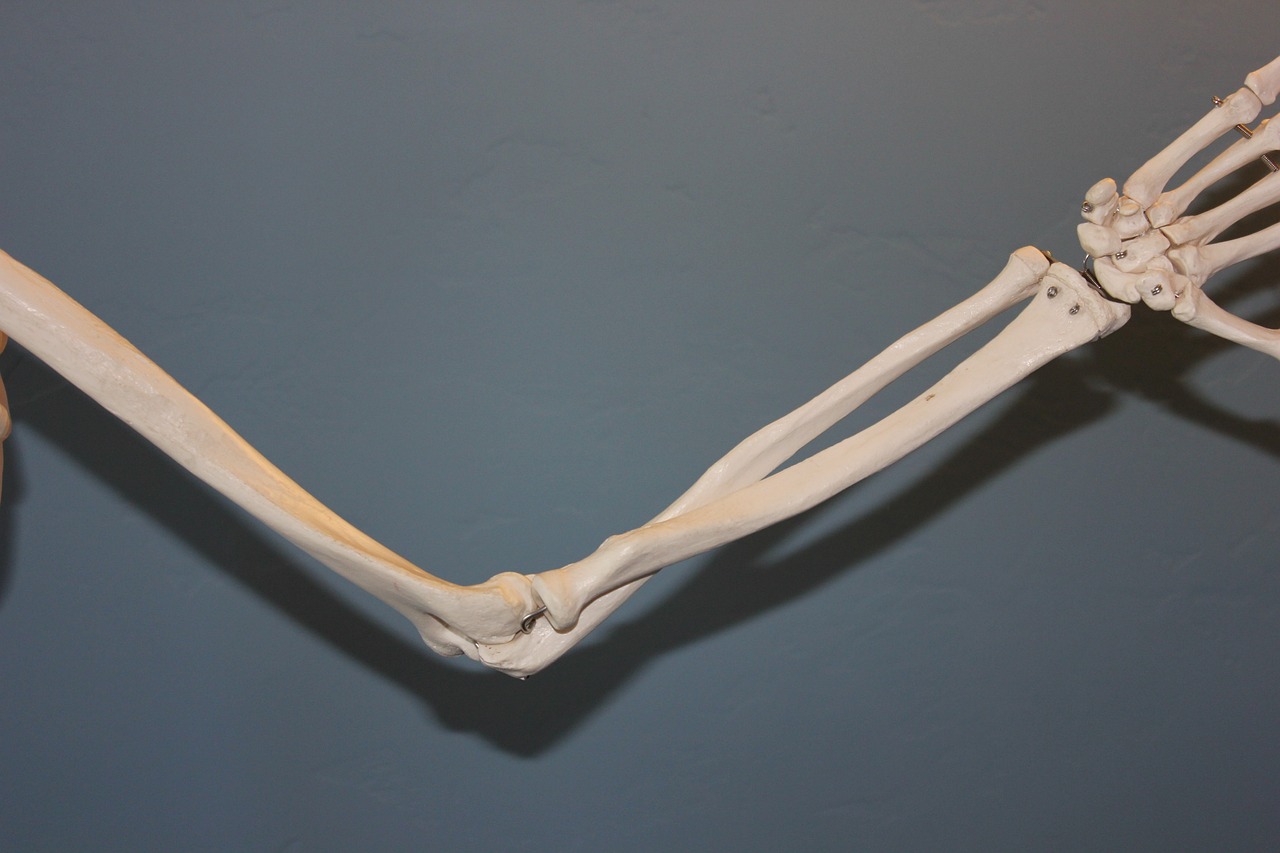Managing Arthritis in Older Pets
As our beloved furry friends age, they often face various health challenges, and one of the most common issues is arthritis. This degenerative joint disease can significantly affect their quality of life, leading to pain and discomfort. But don't worry; there are effective strategies to manage arthritis in older pets that can help them live more comfortably and happily. In this article, we will explore various approaches, from prevention to treatment options, and even lifestyle adjustments that can make a world of difference for your aging companion.
First, it’s crucial to understand what arthritis is and how it impacts our pets. Arthritis is essentially inflammation of the joints, which can lead to pain, swelling, and decreased mobility. Imagine if you had to walk around with sore joints; you’d be less active too, right? This is exactly what our pets experience, and recognizing the signs early can lead to better management and improved comfort. So, how do we spot arthritis in our furry friends?
Identifying the signs of arthritis is key. Common symptoms include limping, reluctance to exercise, and changes in behavior. For instance, if your pet used to love chasing after that tennis ball but now seems more interested in napping, it could be a red flag. Paying close attention to these changes can help you seek timely veterinary care. Remember, the sooner you act, the better the outcome for your pet!
- What are the first signs of arthritis in pets? Look for limping, reluctance to jump or climb, and changes in playfulness.
- Can diet help manage arthritis? Yes, a balanced diet can maintain a healthy weight and reduce joint stress.
- Are there alternative therapies for arthritis? Absolutely! Acupuncture and physical therapy can complement traditional treatments.
- When should I consider euthanasia for my pet with arthritis? When their quality of life significantly declines, consult your veterinarian for guidance.
In conclusion, managing arthritis in older pets requires a multi-faceted approach that includes recognizing symptoms, seeking veterinary care, and making lifestyle changes. By being proactive, you can help your furry friends enjoy their golden years with less pain and more joy.

Understanding Arthritis in Pets
Arthritis is more than just a word that gets tossed around at the vet's office; it's a common condition that affects many older pets, and it can significantly impact their quality of life. Imagine your furry friend, once full of energy and joy, now struggling to get up from their favorite spot on the couch. This change can be heartbreaking for pet owners. Arthritis, characterized by joint inflammation and pain, can occur in various forms, but it generally leads to discomfort and reduced mobility.
Understanding arthritis in pets begins with recognizing that it often stems from wear and tear on the joints over time. Just like how our knees might creak after years of running around, our pets’ joints can suffer too. The most common type of arthritis seen in pets is osteoarthritis, which is a degenerative joint disease. It occurs when the cartilage that cushions the joints wears down, leading to bones rubbing against each other, which can be incredibly painful.
It's essential to note that arthritis can be influenced by several factors, including:
- Age: Older pets are at a higher risk of developing arthritis.
- Weight: Extra pounds put additional stress on joints.
- Genetics: Some breeds are more prone to joint issues than others.
- Injury: Past injuries can lead to the development of arthritis later in life.
Recognizing the symptoms early can lead to better management strategies. If you notice your pet hesitating to jump or showing signs of discomfort when they move, it’s crucial to pay attention. The sooner you can identify these signs, the sooner you can seek help from a veterinarian. Early intervention is key to managing arthritis effectively and ensuring that your pet remains as comfortable and happy as possible.
In summary, understanding arthritis in pets is about recognizing the signs, knowing the causes, and being proactive in seeking treatment. By doing so, you can help your furry companions lead a more comfortable life, filled with the joy they deserve.

Signs and Symptoms to Watch For
Identifying the signs of arthritis in your beloved pets is crucial for ensuring their comfort and quality of life. As our furry friends age, they might not be able to express their discomfort as clearly as we would like. Therefore, it’s essential for pet owners to be vigilant and observant. Common symptoms of arthritis include:
- Limping: This often indicates pain or discomfort in the joints.
- Reluctance to Exercise: If your pet suddenly shows a lack of interest in their favorite activities, it could be a sign of joint pain.
- Changes in Behavior: Increased irritability or withdrawal can signal that your pet is not feeling well.
One of the most noticeable signs of arthritis is a decrease in activity levels. You may notice your pet is less playful or avoids jumping and running. This can be particularly heartbreaking for pet owners who are used to seeing their pets full of energy. It’s almost like watching a once vibrant flower slowly wilt. Monitoring your pet’s activity can help in early detection and intervention.
Pets with arthritis may display a variety of behavioral changes. For instance, you might observe that your dog or cat is more irritable than usual or seems to prefer solitude over companionship. Just like us, pets can feel frustrated when they are in pain, and this may manifest in their interactions with family members. Understanding these changes is vital for providing the necessary support and care your pet needs.
As mentioned earlier, a noticeable decrease in activity levels is often one of the first signs of arthritis. If your pet once loved to chase after toys or go for long walks but now seems to prefer lounging around, it’s time to take a closer look at their health. Monitoring your pet’s playfulness and mobility can help in early detection and intervention, much like catching a cold before it turns into a full-blown flu.
Another critical indicator of arthritis is difficulty with everyday tasks. Pets may struggle with actions such as climbing stairs, jumping onto furniture, or even getting up from their favorite spots. If you notice your pet hesitating or struggling with these tasks, it could be a sign that they are experiencing discomfort. Recognizing these difficulties allows owners to make necessary adjustments to their environments, creating a more accommodating space for their furry companions.
In summary, being aware of these signs and symptoms can make a world of difference in managing arthritis in older pets. The sooner you identify these issues, the sooner you can seek veterinary care and explore treatment options, ultimately improving your pet's quality of life.
| Question | Answer |
|---|---|
| What are the early signs of arthritis in pets? | Early signs include limping, reluctance to exercise, and changes in behavior. |
| How can I help my pet with arthritis? | Consult your veterinarian for treatment options, and make environmental adjustments to improve their comfort. |
| When should I take my pet to the vet for arthritis? | If you notice any signs of pain or decreased activity, it's best to consult your veterinarian as soon as possible. |
Behavioral Changes
When it comes to our beloved furry companions, can often be the first indication that something is amiss. Pets suffering from arthritis may not only experience physical discomfort but also emotional distress. You might notice your once playful pup becoming increasingly irritable or withdrawn, and this can be heartbreaking for any pet owner. Just like humans, pets can feel the weight of their pain, and it often manifests in their behavior.
For instance, a dog that used to greet you with enthusiastic barks and tail wags may now approach you slowly, with a look that says, "I'm not feeling my best." Similarly, a cat that once loved to curl up in your lap might prefer to stay in a cozy corner, avoiding interaction. These changes can be subtle, but they are crucial signals that your pet may need extra care and attention.
Here are some common behavioral changes to look out for:
- Increased Irritability: Pets in pain may snap or growl more than usual, even during gentle handling.
- Withdrawal: A once social pet may isolate themselves, avoiding interaction with family members or other pets.
- Changes in Sleeping Patterns: Your pet may sleep more due to fatigue or may have trouble finding a comfortable position, leading to restless nights.
- Loss of Interest in Play: Activities that used to excite them may no longer hold their interest, leading to a decline in playtime.
Understanding these behavioral shifts is essential for providing the necessary support and care your pet needs. It’s like being a detective in your own home; you need to pay attention to the clues your pet is giving you. If your pet is showing signs of discomfort or changes in behavior, it’s time to consult your veterinarian. They can help you determine the best course of action, whether that’s adjusting their treatment plan or exploring alternative therapies. Remember, your pet relies on you to be their voice, so staying observant and responsive is key to ensuring their comfort and happiness.
Changes in Activity Levels
As our furry friends age, one of the most noticeable changes we may observe is a decline in their activity levels. This isn't just a minor detail; it can be a significant indicator of underlying health issues, particularly arthritis. Imagine your once playful pup, who used to chase after balls with boundless energy, now hesitant to even stand up. This shift can be both heartbreaking and alarming for pet owners. Early detection of these changes is crucial for effective management and maintaining your pet's quality of life.
Pets with arthritis often exhibit a range of behavioral changes that can signal discomfort. For instance, they may become less enthusiastic about their daily walks or playtime. Instead of eagerly waiting by the door, they might linger in their beds, showing a reluctance to move. This reluctance can stem from pain or stiffness, making even simple activities feel daunting. A pet that once enjoyed running around the yard may now prefer lounging in a cozy spot, opting for short, leisurely strolls instead. It's essential to pay attention to these signs, as they can guide you in making necessary adjustments to your pet's routine and environment.
Moreover, a decrease in activity can lead to a vicious cycle. As pets become less active, they may gain weight, which can further exacerbate joint pain and mobility issues. This is why monitoring your pet's activity levels is vital. A helpful approach is to keep a journal of your pet's daily activities, noting any changes in their willingness to engage in play or exercise. This record can serve as a valuable tool for discussions with your veterinarian, helping to pinpoint potential issues before they escalate.
To support your pet's activity levels, consider incorporating gentle exercises into their routine. Short, frequent walks can be beneficial, as they help maintain mobility without overexerting your pet. Additionally, engaging in low-impact activities, such as swimming or playing with soft toys, can keep them active while minimizing stress on their joints. Always consult your veterinarian before starting any new exercise regimen, as they can provide tailored advice based on your pet's specific needs.
In conclusion, recognizing and addressing changes in your pet's activity levels is crucial in managing arthritis. By staying vigilant and proactive, you can help ensure that your beloved companion remains comfortable and engaged in life, even as they age. Remember, a happy pet is one that feels good, and your attention to their activity levels can play a pivotal role in enhancing their overall well-being.
- What are the early signs of arthritis in pets? Look for changes in activity levels, reluctance to jump or climb, and signs of pain when moving.
- Can diet help manage arthritis in pets? Yes, a balanced diet and joint supplements can support joint health and weight management.
- What types of exercise are safe for arthritic pets? Gentle exercises like short walks, swimming, and low-impact play are usually safe and beneficial.
- When should I consult a veterinarian about my pet's arthritis? If you notice any signs of discomfort, changes in behavior, or a significant decline in activity, it's best to seek veterinary advice.
Difficulty with Daily Activities
As our beloved pets age, they may begin to face challenges in their daily activities due to arthritis. Imagine waking up one day and finding it hard to get out of bed or climb the stairs that once seemed like a breeze. For our furry friends, this can be a daily reality. is often one of the most heartbreaking signs of arthritis, and recognizing these struggles is essential for pet owners who want to provide the best care possible.
Pets with arthritis may find it increasingly hard to perform simple tasks that they once tackled with ease. For instance, jumping onto the couch or getting into the car can become daunting challenges. These seemingly minor activities can lead to frustration for both the pet and the owner. You might notice your pet hesitating before attempting to jump or even avoiding certain areas of the home altogether. This reluctance is often a clear indicator of discomfort and pain.
Additionally, pets may struggle with basic mobility, leading to a more sedentary lifestyle. This change can result in a vicious cycle: as they move less, they may gain weight, which in turn puts more stress on their joints. To illustrate this point, consider the following common daily activities that can become difficult for pets with arthritis:
- Climbing Stairs: Many pets struggle to ascend or descend stairs, which can limit their access to different areas of the home.
- Getting Up: Rising from a lying position may take longer, and pets may appear stiff or reluctant.
- Playing: Activities that involve running or jumping may be avoided, leading to decreased exercise and social interaction.
- Grooming: Pets may find it challenging to groom themselves, leading to matted fur or skin issues.
Recognizing these difficulties allows pet owners to take proactive steps to help their furry companions. Simple modifications to the home environment, such as providing ramps or non-slip mats, can make a significant difference in their day-to-day lives. Moreover, being attentive to their needs can help strengthen the bond between pets and their owners, ensuring that our four-legged friends continue to feel loved and cared for, even when faced with the challenges of arthritis.
Q1: How can I tell if my pet is experiencing difficulty with daily activities due to arthritis?
A1: Look for signs such as reluctance to jump, difficulty climbing stairs, or changes in grooming habits. If your pet seems to be struggling with these activities, it may be time to consult your veterinarian.
Q2: Are there specific modifications I can make in my home to assist my pet?
A2: Yes! Consider adding ramps for easier access to furniture, using non-slip mats on slippery floors, and providing soft bedding to make it easier for your pet to rest comfortably.
Q3: When should I consult a veterinarian about my pet's arthritis?
A3: If you notice persistent changes in your pet's behavior, mobility, or daily activities, it is important to consult your veterinarian. Early intervention can lead to better management of the condition.
Physical Examination and Diagnosis
When it comes to managing arthritis in our beloved older pets, a thorough physical examination is absolutely essential. This is the first step towards understanding the extent of their condition and tailoring a treatment plan that suits their unique needs. During a veterinary visit, the veterinarian will typically start with a detailed history of your pet’s symptoms and behavior. Have you noticed your furry friend limping or hesitating to jump onto their favorite couch? These observations can provide valuable insights into their condition.
Next, the veterinarian will conduct a comprehensive physical examination. This process often includes:
- Palpation of Joints: The vet will gently feel your pet's joints to check for swelling, heat, or pain. This can reveal a lot about the inflammation and discomfort your pet may be experiencing.
- Range of Motion Tests: Testing how well your pet can move their joints helps determine the severity of arthritis. Limited movement can indicate advanced joint issues.
- Neurological Assessment: Ensuring that your pet’s nervous system is functioning properly is also crucial, as some symptoms can mimic arthritis.
But that’s not all! To confirm the diagnosis of arthritis and rule out other potential issues, veterinarians may use advanced diagnostic tools. Common methods include:
| Diagnostic Tool | Purpose |
|---|---|
| X-rays | To visualize joint changes, such as bone spurs or joint space narrowing. |
| Blood Tests | To check for underlying conditions that may be contributing to joint pain. |
| Joint Fluid Analysis | To assess the health of the joint fluid and look for signs of inflammation or infection. |
Understanding the diagnosis is crucial for pet owners. It not only helps in deciding on the right treatment but also sets the stage for ongoing management of your pet’s condition. Remember, early detection can make a world of difference. If you suspect your pet may be suffering from arthritis, don’t hesitate to consult your veterinarian. After all, our furry friends deserve the best care possible!
Q: How can I tell if my pet has arthritis?
A: Look for signs such as limping, reluctance to exercise, changes in behavior, and difficulty with daily activities like climbing stairs.
Q: What can I do at home to help my pet?
A: Providing a comfortable living space, maintaining a healthy diet, and ensuring regular veterinary check-ups can all help manage arthritis.
Q: Are there any specific diets that help with arthritis?
A: Yes, diets rich in omega-3 fatty acids can help reduce inflammation. Consult your vet for tailored dietary advice.
Q: When should I consider euthanasia for my pet?
A: This is a difficult decision, but if your pet's quality of life is severely compromised and they are in constant pain, it may be time to discuss options with your veterinarian.

Treatment Options for Arthritis
When it comes to managing arthritis in our beloved older pets, it's essential to explore a variety of treatment options that can help improve their quality of life. Just like humans, pets can experience joint pain and discomfort, making it crucial to find the right balance between medication, alternative therapies, and lifestyle adjustments. Each pet is unique, and what works for one may not work for another, so consulting with your veterinarian is key.
One of the most common approaches involves the use of medications for pain relief. Veterinarians often prescribe anti-inflammatory drugs that specifically target the swelling and discomfort associated with arthritis. These medications can significantly enhance your pet's mobility and overall well-being. However, it’s important to understand the different types of medications available, as they can vary in effectiveness and potential side effects. For instance, NSAIDs (non-steroidal anti-inflammatory drugs) are frequently used, but they require careful monitoring to ensure they don’t adversely affect your pet's liver or kidneys.
In addition to traditional medications, many pet owners are turning to alternative therapies to provide relief for their furry friends. Options such as acupuncture and physical therapy have gained popularity for their ability to complement conventional treatments. Acupuncture, for example, involves the insertion of fine needles into specific points of the body to stimulate healing and reduce pain. Physical therapy can include exercises designed to strengthen muscles around the joints, improve flexibility, and promote mobility. These therapies can be particularly beneficial when used in conjunction with medication, creating a holistic approach to treatment.
Another crucial aspect of managing arthritis is diet and nutrition. A well-balanced diet can help maintain a healthy weight, which is vital for reducing stress on your pet's joints. Overweight pets are at a higher risk of developing more severe arthritis symptoms, so implementing weight management strategies is essential. This may involve portion control, regular exercise, and possibly the incorporation of joint supplements like glucosamine and chondroitin into their diet. These supplements are known to support joint health and can make a noticeable difference in your pet's comfort levels.
To further enhance your pet's comfort, consider making environmental adjustments. Simple changes around the home can create a more accommodating living space for your older pet. For instance, providing soft bedding can help ease their discomfort, while accessibility modifications like ramps or non-slip surfaces can aid them in moving around more easily. These adjustments not only improve their mobility but also reduce the risk of injury, which is particularly important for pets with arthritis.
In summary, managing arthritis in older pets requires a multifaceted approach that combines medications, alternative therapies, dietary changes, and environmental modifications. Working closely with your veterinarian will help you tailor a treatment plan that best suits your pet's individual needs, ensuring they remain comfortable and happy in their golden years.
- What is the best medication for arthritis in pets?
There isn't a one-size-fits-all answer. It depends on your pet's specific condition and health history. Always consult your veterinarian for the best options.
- Can diet really impact arthritis symptoms?
Absolutely! A balanced diet helps maintain a healthy weight, which is crucial for reducing stress on joints.
- How often should my pet see the vet for arthritis management?
Regular check-ups are essential. Your veterinarian will recommend a schedule based on your pet's condition and treatment plan.
Medications for Pain Relief
When it comes to managing arthritis in our beloved older pets, play a crucial role. Just like how we might reach for a painkiller after a long day, our furry friends deserve the same consideration. It's essential to understand that not all medications are created equal, and what works for one pet may not work for another. Therefore, consulting with a veterinarian is vital in determining the best course of action for your pet's unique situation.
Veterinarians often prescribe a variety of anti-inflammatory medications to help alleviate pain and swelling associated with arthritis. Some of the most commonly prescribed medications include:
- Non-Steroidal Anti-Inflammatory Drugs (NSAIDs): These are the go-to medications for managing arthritis pain. They work by reducing inflammation and providing relief. Examples include carprofen, deracoxib, and meloxicam.
- Opioids: In more severe cases, veterinarians may prescribe opioids for pain management. These are typically used when NSAIDs are not effective or when the pet is experiencing significant discomfort.
- Corticosteroids: These can be effective in reducing inflammation but are usually recommended for short-term use due to potential side effects.
While medications can significantly improve your pet's quality of life, it's crucial to monitor for any side effects. Common side effects of these medications can include gastrointestinal issues, liver dysfunction, and kidney problems. Regular check-ups with your veterinarian will help ensure that your pet is responding well to the treatment and that any potential side effects are managed promptly.
In addition to traditional medications, there are also nutraceuticals available that can support joint health. These include supplements like glucosamine and chondroitin, which may help in maintaining joint function and reducing pain. It's important to remember that while these supplements can be beneficial, they should complement, not replace, prescribed medications.
Ultimately, managing arthritis in older pets is about finding the right balance between effective pain relief and maintaining their overall health. Always consult with your veterinarian to determine the best pain management strategy tailored to your pet's specific needs.
1. How do I know if my pet needs medication for arthritis?
If your pet displays signs of discomfort, such as limping, reluctance to move, or changes in behavior, it may be time to consult your veterinarian about potential medication options.
2. Are there side effects to arthritis medications?
Yes, common side effects can include gastrointestinal upset, liver issues, or kidney problems. Regular veterinary check-ups can help monitor your pet's health while on medication.
3. Can I give my pet over-the-counter pain relief?
No, many over-the-counter medications for humans can be toxic to pets. Always consult with a veterinarian before giving any medication to your pet.
4. How long does it take for arthritis medications to work?
The time it takes for medications to relieve pain can vary. Some pets may show improvement within a few days, while others may take longer. It's essential to follow your vet's recommendations and be patient.
5. What are some natural alternatives to medication?
Some natural alternatives include joint supplements, acupuncture, and physical therapy. Discuss these options with your veterinarian to see what might be appropriate for your pet.
Alternative Therapies
When it comes to managing arthritis in our beloved older pets, conventional medicine is just one piece of the puzzle. can play a significant role in enhancing their quality of life and providing relief from discomfort. These therapies are often used alongside traditional treatments, creating a well-rounded approach to care. Imagine combining the best of both worlds—modern medicine and holistic practices—to help your furry friend feel their best!
One of the most popular alternative therapies is acupuncture. This ancient practice involves inserting thin needles into specific points of the body to stimulate healing and reduce pain. Many pet owners report noticeable improvements in their pets' mobility and overall comfort after just a few sessions. It's like giving your pet a little boost of energy and relief, all while they relax!
Another effective option is physical therapy. Just like humans, pets can benefit from tailored exercise programs designed to strengthen their muscles and improve joint flexibility. A skilled pet physiotherapist can create a regimen that suits your pet's specific needs, focusing on low-impact exercises that are gentle on their joints. Think of it as a personalized workout plan that helps them regain their zest for life!
Massage therapy is yet another alternative that can work wonders. Gentle massage can help alleviate muscle tension and improve circulation, making it an excellent choice for pets suffering from arthritis. Not only does it provide physical relief, but it also offers emotional comfort, allowing your pet to bond with you during the process. It's like a spa day for your furry companion!
Additionally, laser therapy has gained popularity in recent years. This non-invasive treatment uses specific wavelengths of light to penetrate deep into the tissues, promoting healing and reducing inflammation. Many pets find this treatment soothing, and it can lead to significant improvements in their mobility and comfort levels.
It's important to note that while alternative therapies can be beneficial, they should always be discussed with your veterinarian. A qualified vet can help you determine which therapies are appropriate for your pet's specific condition and ensure that they complement any existing treatment plans. After all, the goal is to create a holistic approach that maximizes your pet's health and happiness!
In conclusion, integrating alternative therapies into your pet's arthritis management plan can be a game-changer. Whether it's through acupuncture, physical therapy, massage, or laser treatment, these options can provide relief and improve your pet's overall quality of life. So, why not explore these alternatives and see how they can transform your furry friend's journey through arthritis?
- What are the benefits of alternative therapies for pets with arthritis? Alternative therapies can provide pain relief, improve mobility, and enhance overall well-being when used alongside traditional treatments.
- How do I know which alternative therapy is right for my pet? Consulting with your veterinarian is crucial. They can recommend therapies based on your pet's specific condition and needs.
- Are alternative therapies safe for all pets? While many pets can benefit from alternative therapies, it's important to ensure that they are suitable for your pet's health status and medical history.
- How long does it take to see results from alternative therapies? Results can vary depending on the therapy and the individual pet. Some may experience immediate relief, while others may take several sessions to notice significant improvements.

Diet and Nutrition Management
Managing arthritis in older pets goes beyond just medication and physical therapy; diet and nutrition play a crucial role in enhancing their quality of life. A well-balanced diet can help maintain a healthy weight, which is essential for reducing stress on their joints. Think of it this way: just like a car runs better on the right fuel, your pet's body functions optimally with the right nutrition. By providing a diet rich in essential nutrients, you can support their overall health and mobility.
When it comes to choosing the right food, consider options that are specifically formulated for senior pets or those with joint issues. These diets often contain higher levels of omega-3 fatty acids, which are known for their anti-inflammatory properties. Ingredients like fish oil or flaxseed can be beneficial, helping to reduce joint inflammation and pain. Additionally, look for foods that include antioxidants to support their immune system and combat oxidative stress.
Incorporating joint supplements into your pet's diet can also be a game-changer. Supplements like glucosamine and chondroitin can help maintain cartilage health and improve joint function. It's important to consult your veterinarian before starting any new supplements, as they can recommend the right dosage and type based on your pet's specific needs.
| Supplement | Benefits |
|---|---|
| Glucosamine | Supports cartilage health and reduces joint inflammation. |
| Chondroitin | Helps retain water in the cartilage, improving its shock-absorbing properties. |
| Omega-3 Fatty Acids | Reduces inflammation and promotes joint mobility. |
Another vital aspect of diet management is weight control. Obesity can exacerbate arthritis symptoms, putting additional pressure on already strained joints. To keep your furry friend at a healthy weight, consider the following strategies:
- Measure your pet's food portions accurately.
- Avoid overfeeding and limit treats.
- Incorporate regular exercise into their routine, tailored to their ability.
Lastly, hydration is often overlooked but is essential for joint health. Ensure your pet has access to fresh water at all times. Staying hydrated helps keep their joints lubricated, which can alleviate discomfort. Remember, every pet is unique, and what works for one may not work for another. Regular consultations with your veterinarian can help you tailor a diet and nutrition plan that best meets your pet's needs, ensuring they live a happy and active life despite the challenges of arthritis.
1. What type of diet is best for pets with arthritis?
A diet rich in omega-3 fatty acids, antioxidants, and joint supplements like glucosamine and chondroitin is beneficial for pets with arthritis. Senior pet formulas are often a good choice.
2. How can I help my pet lose weight?
To help your pet lose weight, measure their food portions, avoid overfeeding, and incorporate regular exercise. Consult your veterinarian for a tailored weight management plan.
3. Are joint supplements safe for my pet?
Most joint supplements are safe for pets, but it’s essential to consult your veterinarian before starting any new supplements to ensure they are appropriate for your pet's specific health needs.
4. How can I tell if my pet is overweight?
You can determine if your pet is overweight by checking their body condition score. You should be able to feel their ribs without excess fat covering. If you have concerns, consult your veterinarian for guidance.
Weight Management Strategies
Maintaining an ideal weight is crucial for pets suffering from arthritis. Just like humans, excess weight can put additional strain on your furry friend's joints, exacerbating their discomfort and limiting mobility. Imagine carrying a heavy backpack all day long; it would be exhausting and painful, right? Well, that's what your pet feels when they're overweight. By implementing effective weight management strategies, you can significantly improve their quality of life.
One of the first steps in weight management is to assess your pet's current weight. You can do this by consulting your veterinarian, who can help determine your pet's ideal weight based on their breed, age, and overall health. Once you have a target weight in mind, creating a calorie-controlled diet becomes essential. This means feeding your pet a balanced diet that is lower in calories but still rich in nutrients. Many pet food brands offer specialized diets designed for weight loss or maintenance, so be sure to check with your vet to find the best option for your pet.
In addition to adjusting your pet's diet, incorporating regular exercise into their routine is vital. However, with arthritis, you need to be cautious about the type and intensity of activities. Low-impact exercises, such as short walks or gentle play sessions, can help keep your pet active without putting too much stress on their joints. Think of it as a gentle stroll in the park instead of a marathon! Gradually increasing the duration and frequency of these activities can help your pet shed those extra pounds while also improving their joint health.
Another effective strategy is to monitor portion sizes. Overfeeding is a common pitfall that can lead to weight gain. Use measuring cups to ensure you're giving your pet the right amount of food. Additionally, consider dividing their daily meals into smaller portions throughout the day, which can help maintain energy levels and prevent overeating. Always remember that treats should be given sparingly, as they can quickly add up in calories. Opt for healthy, low-calorie treats or even fresh vegetables like carrots or green beans as alternatives.
Lastly, keeping a weight loss journal can be a helpful tool in tracking your pet's progress. Documenting their food intake, exercise routines, and weight changes can help you stay accountable and make necessary adjustments to their plan. If you notice that your pet is not losing weight as expected, it may be time to revisit their diet and exercise regimen with your veterinarian.
In summary, effective weight management for pets with arthritis involves a combination of dietary changes, regular exercise, portion control, and tracking progress. By taking these steps, you can help your furry friend lead a more comfortable and active life, free from the burdens of excess weight.
- How can I tell if my pet is overweight? Look for signs like difficulty in feeling their ribs, a lack of a defined waist, or decreased activity levels.
- What type of food should I give my pet for weight loss? Consult your veterinarian for recommendations on low-calorie, high-nutrient diets suitable for your pet's specific needs.
- How much exercise does my pet need? Aim for at least 20-30 minutes of low-impact exercise daily, but always adjust based on your pet's comfort and ability.
- Can I use treats during weight management? Yes, but choose low-calorie options and limit their quantity to avoid excess calorie intake.
- How quickly should my pet lose weight? A safe weight loss rate is about 1-2% of their body weight per week. Rapid weight loss can be harmful.
Joint Supplements
When it comes to managing arthritis in our beloved older pets, can be a game changer. These supplements are designed to support and enhance joint health, helping to alleviate pain and improve mobility. The most common types of joint supplements include glucosamine, chondroitin, and omega-3 fatty acids. Each of these ingredients plays a unique role in maintaining joint function and reducing inflammation.
Glucosamine is a natural compound found in cartilage, and it helps to rebuild and maintain joint tissues. By providing your pet with glucosamine, you are essentially giving their joints the building blocks they need to repair and regenerate. Chondroitin, on the other hand, works by preventing the breakdown of cartilage and promoting its elasticity. This duo can work wonders in easing the discomfort associated with arthritis.
Moreover, omega-3 fatty acids are well-known for their anti-inflammatory properties. They can help reduce swelling in the joints and improve overall mobility. When combined with glucosamine and chondroitin, omega-3s create a powerful trio that can significantly enhance your pet’s quality of life.
However, it’s essential to remember that not all joint supplements are created equal. Always consult your veterinarian before introducing any new supplement to your pet’s diet. They can recommend the right dosage and ensure that the supplement is safe and effective for your pet's specific condition.
| Supplement | Benefits | Dosage |
|---|---|---|
| Glucosamine | Supports cartilage repair and reduces pain | Varies by weight; consult vet |
| Chondroitin | Prevents cartilage breakdown and improves joint function | Varies by weight; consult vet |
| Omega-3 Fatty Acids | Reduces inflammation and improves mobility | Varies by weight; consult vet |
In conclusion, incorporating joint supplements into your pet's routine can be a vital step in managing arthritis. Not only can these supplements help in reducing pain and inflammation, but they can also promote a more active and joyful lifestyle for your furry friend. Always keep an open line of communication with your veterinarian to ensure the best care for your pet.
- What are joint supplements? Joint supplements are dietary aids that support joint health and function, often containing ingredients like glucosamine and chondroitin.
- How long does it take for joint supplements to work? Many pet owners notice improvements within a few weeks, but it can vary depending on the individual pet and the severity of their condition.
- Are there any side effects of joint supplements? While generally safe, some pets may experience mild gastrointestinal upset. Always consult with your vet for personalized advice.
- Can I give my pet human joint supplements? It's best to avoid giving human supplements to pets unless specifically advised by a veterinarian, as dosages and ingredients can differ.

Environmental Adjustments
Making can significantly enhance the quality of life for pets suffering from arthritis. Just like a cozy blanket on a chilly day, a few thoughtful changes around the home can provide immense comfort and ease for your furry friend. You wouldn't want to navigate a maze in pain, right? So, let’s explore some effective modifications that can create a more accommodating living space.
First and foremost, consider the layout of your home. Is there a clear path for your pet to move around without obstacles? Removing clutter, such as toys or furniture, can make a world of difference. Imagine your pet trying to walk with stiff joints, only to be met with a sudden barrier. It's like trying to run a marathon in a crowded room! Ensuring that their favorite spots are easily accessible is crucial.
Another important aspect is the bedding. Providing soft, supportive bedding can help alleviate discomfort. Look for orthopedic dog beds that offer better support for aching joints. A good bed is like a plush cloud; it cradles your pet, allowing them to rest without straining their bodies. Additionally, placing their bed in a warm, draft-free area can help soothe their joints, especially during colder months.
Accessibility modifications are also key. Installing ramps can help your pet get onto furniture or into the car without the need for jumping, which can be painful. Think of it as a gentle slope instead of a steep hill. Non-slip surfaces, such as rugs or mats, can prevent your pet from slipping and sliding, reducing the risk of falls that could exacerbate their condition. You wouldn’t want to walk on ice in your slippers, would you? Keeping your pet safe and stable is paramount.
Lastly, consider the temperature of your home. Keeping it warm can help ease joint stiffness. You might even want to invest in a heated pet bed or blanket for those particularly chilly nights. Just as we bundle up in winter, our pets appreciate warmth too. Remember, every little adjustment can contribute to a happier, more comfortable life for your beloved companion.
- What are some signs that my pet may need environmental adjustments? Look for signs of discomfort, such as reluctance to move, difficulty getting up, or changes in behavior. If your pet seems to struggle with their surroundings, it may be time for some modifications.
- How can I make my home more accessible for my arthritic pet? Consider adding ramps, removing obstacles, and providing non-slip surfaces. Also, ensure their favorite resting spots are easily reachable.
- Are there specific types of bedding that are better for arthritic pets? Orthopedic beds are highly recommended as they provide support and comfort, helping to alleviate pressure on joints.
- Is it necessary to consult a veterinarian before making adjustments? While many adjustments can be made independently, consulting your veterinarian can provide tailored advice specific to your pet's needs.
Creating a Comfortable Living Space
Creating a comfortable living space for your older pet is one of the most thoughtful things you can do to manage their arthritis effectively. Imagine how your pet feels when they have to struggle to get up from a hard floor or jump onto a couch that seems like a mountain. By making a few simple adjustments, you can transform their environment into a haven of comfort and ease. Start by providing soft bedding. A plush bed with ample cushioning can relieve pressure on their joints and make resting a more enjoyable experience. Look for beds specifically designed for senior pets, which often offer orthopedic support.
Next, consider the placement of their favorite resting spots. If your pet loves to lounge in the sun, ensure they have easy access to that area without having to leap over obstacles. Accessibility is key! You might want to place their bed near your own, so they feel close to you without having to navigate too far. Additionally, consider using pet ramps or steps to help them reach their favorite spots without the strain of jumping. This simple addition can make a world of difference in their daily routine.
Moreover, think about the flooring in your home. Hard surfaces can be slippery and uncomfortable for pets with arthritis. To combat this, you can use non-slip mats or area rugs in places where your pet frequently walks. These can provide better traction and reduce the risk of falls. Also, ensure that their food and water bowls are at a comfortable height. You might want to invest in elevated bowls, which can prevent unnecessary bending and strain on their joints.
Finally, keep their living space free from clutter. A tidy area allows your pet to move around more freely without the risk of bumping into things. By providing a safe, comfortable environment, you're not just enhancing their quality of life; you're also showing them how much you care. Remember, every little adjustment counts in making their golden years as comfortable as possible.
- What are the signs that my pet may need a more comfortable living space? Look for signs of discomfort, such as reluctance to move, difficulty getting up, or changes in sleeping habits.
- How can I tell if my pet's bed is suitable for their arthritis? An ideal bed should provide ample support and cushioning, preferably orthopedic, to relieve pressure on their joints.
- Are ramps necessary for all pets with arthritis? While not every pet will need a ramp, they can be extremely beneficial for pets that struggle with jumping or climbing.
- How often should I assess my pet's living space for comfort? Regularly evaluate their environment, especially if you notice any changes in their mobility or behavior.
Accessibility Modifications
Making in your home can significantly improve the quality of life for pets suffering from arthritis. Just like how we might install grab bars or ramps for our elderly family members, our furry friends also benefit from thoughtful adjustments in their living spaces. These changes not only enhance their mobility but also help prevent injuries that could exacerbate their condition.
One of the simplest yet most effective modifications is the installation of ramps. Ramps can replace stairs, making it easier for pets to access their favorite spots without putting undue strain on their joints. Imagine how much easier it is for a dog to glide up a ramp rather than struggle to climb a set of stairs! This small change can lead to a world of difference, allowing them to enjoy their environment without fear of pain or injury.
Another important aspect is ensuring that your home has non-slip surfaces. Slippery floors can be a major hazard for pets with arthritis, leading to falls and further joint issues. Consider using area rugs or non-slip mats in high-traffic areas. This not only provides better traction but also gives your pet the confidence to move around freely. Think of it as creating a safe path for them to navigate their kingdom without the risk of slipping.
Additionally, consider the height of furniture. If your pet struggles to jump onto the couch or bed, you might want to lower these surfaces or provide pet-friendly steps. It’s like giving them a gentle boost to reach their favorite lounging spots! Remember, the goal is to minimize the effort required for your pet to move around and access their essentials.
Lastly, ensuring that their food and water bowls are at a comfortable height can also make a world of difference. Elevated bowls can reduce the strain on their neck and joints, allowing them to eat and drink without discomfort. It’s these little adjustments that show how much we care and can lead to a happier, healthier pet.
- What are some common signs that my pet may need accessibility modifications?
Look for signs like reluctance to jump, difficulty climbing stairs, or changes in behavior when navigating their environment. - How can I determine the best modifications for my pet?
Consult with your veterinarian for personalized recommendations based on your pet's specific needs and mobility challenges. - Are there any specific products you recommend for accessibility?
Look for pet ramps, non-slip mats, and elevated feeding stations designed specifically for pets with mobility issues.

Regular Veterinary Check-ups
When it comes to managing arthritis in older pets, are not just a good idea; they are essential. These visits serve as a proactive approach to monitor your pet's health and ensure their treatment plan is effective. Just like how we visit our doctors for routine health assessments, our furry friends require the same level of care and attention. During these check-ups, veterinarians can evaluate your pet's joint health and overall condition, making adjustments to medications or therapies as needed.
But what exactly happens during these check-ups? Here are some key components:
- Physical Examination: The vet will perform a thorough physical examination, checking for signs of pain, swelling, or stiffness in the joints.
- Weight Assessment: Maintaining a healthy weight is crucial for pets with arthritis, so the vet will monitor your pet's weight closely.
- Diagnostic Tests: Depending on your pet's condition, the vet may recommend X-rays or blood tests to assess the severity of arthritis and rule out other health issues.
By keeping a close eye on your pet’s health, veterinarians can identify any changes in their condition early on, allowing for timely interventions. This is particularly important because arthritis can progress over time, and what may start as a minor discomfort can escalate into severe pain if left untreated. Regular check-ups provide an opportunity to discuss any concerns you might have, whether it's about your pet's mobility, pain management, or behavioral changes.
Additionally, these visits are a chance for you to learn more about lifestyle adjustments and home care strategies that can benefit your pet. For instance, your veterinarian might suggest modifications in your home environment to enhance your pet's comfort and mobility. This could include adding ramps, providing softer bedding, or even adjusting their diet to better support joint health.
In summary, regular veterinary check-ups are a cornerstone of effective arthritis management in older pets. They not only help in tracking the progression of the disease but also play a crucial role in ensuring that your furry friend enjoys a high quality of life. So, don’t wait for symptoms to worsen; schedule those check-ups and keep your pet's health on the right track!
Q: How often should I take my pet for a veterinary check-up?
A: It is generally recommended to have your older pets checked at least once every six months, but your veterinarian may suggest more frequent visits based on your pet’s specific health needs.
Q: What should I expect during a veterinary check-up for arthritis?
A: Expect a thorough physical exam, weight assessment, and possibly diagnostic tests like X-rays to evaluate the condition of your pet's joints.
Q: Can I manage my pet's arthritis at home?
A: While home care is important, it should complement regular veterinary visits. Discuss with your vet about appropriate home care strategies, including diet and exercise modifications.
Q: What signs indicate that my pet’s arthritis is worsening?
A: Signs may include increased difficulty in moving, reluctance to engage in activities they once enjoyed, changes in appetite, or noticeable pain when touched.
Monitoring Progression
Monitoring the progression of arthritis in your older pet is crucial for ensuring their comfort and well-being. Regular veterinary check-ups allow pet owners to stay informed about their furry friend's health status. During these visits, veterinarians will assess various factors that can indicate how the arthritis is progressing. This includes evaluating your pet’s mobility, pain levels, and overall quality of life.
Veterinarians often use specific tools and methods to track changes in your pet's condition over time. For instance, they may perform a physical examination and utilize diagnostic imaging, such as X-rays, to visualize joint health. Additionally, blood tests can help rule out other conditions that may mimic arthritis symptoms. It’s important to keep an open line of communication with your vet, discussing any changes you’ve noticed at home. This could include:
- Changes in mobility, such as difficulty walking or climbing stairs
- Increased reluctance to play or engage in activities they once enjoyed
- Signs of pain, such as whining or yelping when touched
- Changes in appetite or weight
By tracking these signs, you and your veterinarian can work together to adjust treatment plans accordingly. This might involve modifying medication dosages, exploring alternative therapies, or even re-evaluating dietary needs. Regular monitoring not only helps in managing the condition but also enhances your pet's overall quality of life.
Remember, the goal is to ensure your pet remains as comfortable and active as possible. If you notice a significant decline in your pet’s health or an increase in pain, it’s essential to contact your veterinarian promptly. They can provide guidance on the next steps, which may include more intensive treatments or adjustments to their daily routine.
- How often should I take my pet for check-ups? Regular check-ups every 6 months are recommended, but consult your veterinarian for a personalized schedule based on your pet's condition.
- What are the signs that my pet's arthritis is worsening? Look for increased pain, reluctance to move, changes in eating habits, or any noticeable behavioral changes.
- Can I manage my pet's arthritis at home? Yes, but it's crucial to follow your vet's recommendations regarding medications, diet, and exercise.
- When should I consider euthanasia for my pet with arthritis? If your pet is experiencing severe pain or a significant decline in quality of life, discuss options with your veterinarian.
When to Consider Euthanasia
Deciding to consider euthanasia for your beloved pet is one of the most heart-wrenching decisions a pet owner can face. It's essential to approach this sensitive topic with compassion and understanding. While we all want our furry companions to live forever, there comes a time when their quality of life may diminish due to chronic pain and suffering, particularly in cases of advanced arthritis. So, how do you know when it's time to make this difficult choice?
First and foremost, it's crucial to assess your pet's overall well-being. Ask yourself the following questions:
- Is your pet experiencing constant pain that medication cannot alleviate?
- Are they unable to perform basic activities like standing, walking, or even lying down comfortably?
- Has there been a significant decline in their appetite or interest in activities they once enjoyed?
- Are they showing signs of distress or anxiety more frequently?
If your answers lean towards a consistent state of discomfort, it may be time to consult your veterinarian for an honest evaluation. A vet can provide insights into your pet's condition and help you weigh the options. They may suggest a comprehensive assessment that includes pain management effectiveness, mobility, and overall health.
Another factor to consider is the emotional toll on both you and your pet. Pets are incredibly intuitive and can sense their owner's feelings. If your pet is experiencing a significant decline and you find yourself frequently stressed or saddened by their condition, it might be an indication that they, too, are suffering. In such cases, the compassionate choice might be to let them go peacefully, rather than prolonging their suffering.
Additionally, it's essential to have open conversations with family members or close friends who understand your pet's situation. Discussing your feelings and options can provide valuable perspectives and emotional support during this challenging time.
Ultimately, the decision to consider euthanasia should be based on a combination of your pet's quality of life, their level of pain, and your ability to provide the necessary care. Remember, choosing to say goodbye can be an act of love, allowing your pet to escape the confines of pain and discomfort.
- How do I know if my pet is in pain?
Look for signs such as limping, reluctance to move, excessive vocalization, or changes in behavior. - What are some alternatives to euthanasia?
Consider palliative care options, such as pain management medications and alternative therapies like acupuncture. - Can I be with my pet during euthanasia?
Yes, most veterinarians allow pet owners to be present during the procedure for comfort. - How can I cope with the loss of my pet?
Seek support from friends, family, or pet loss support groups to help navigate your grief.
Frequently Asked Questions
- What are the early signs of arthritis in older pets?
Early signs of arthritis in older pets can include limping, reluctance to jump or run, and noticeable changes in their activity levels. If you notice your pet being less playful or struggling with daily activities, it may be time to consult your veterinarian.
- How is arthritis diagnosed in pets?
Veterinarians diagnose arthritis through a combination of physical examinations and diagnostic tools such as X-rays and blood tests. These methods help rule out other health issues and confirm the presence of arthritis.
- What treatment options are available for pets with arthritis?
There are several treatment options for managing arthritis in pets, including anti-inflammatory medications, joint supplements, and alternative therapies like acupuncture and physical therapy. Each pet is unique, so working with your veterinarian to find the best approach is crucial.
- How can diet impact my pet's arthritis?
A proper diet is essential for managing arthritis in older pets. Maintaining a healthy weight reduces stress on their joints, while joint supplements like glucosamine can provide additional support. Always consult your vet for dietary recommendations tailored to your pet's needs.
- What environmental adjustments can I make for my pet?
Creating a comfortable living space can greatly benefit pets with arthritis. Consider adding soft bedding, ramps for easier access, and non-slip surfaces to help them navigate their environment safely and comfortably.
- How often should my pet see the veterinarian for arthritis management?
Regular veterinary check-ups are essential for monitoring your pet's arthritis. Depending on the severity of the condition, your vet may recommend visits every few months to assess their progress and adjust treatment plans as needed.
- When should I consider euthanasia for my pet with arthritis?
This is an incredibly tough decision. If your pet's quality of life has significantly declined due to severe arthritis pain and they are no longer enjoying their daily activities, it may be time to have a compassionate discussion with your veterinarian about euthanasia.



















